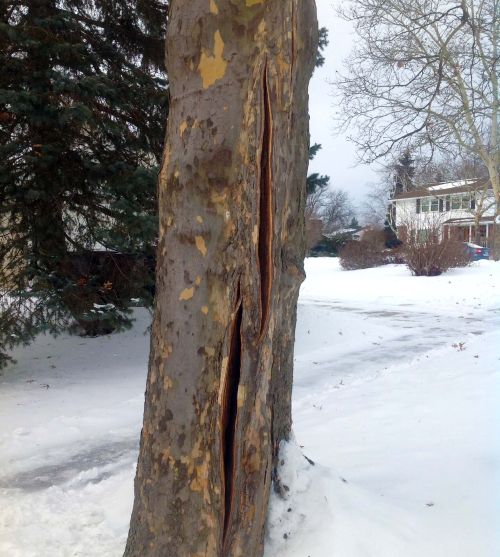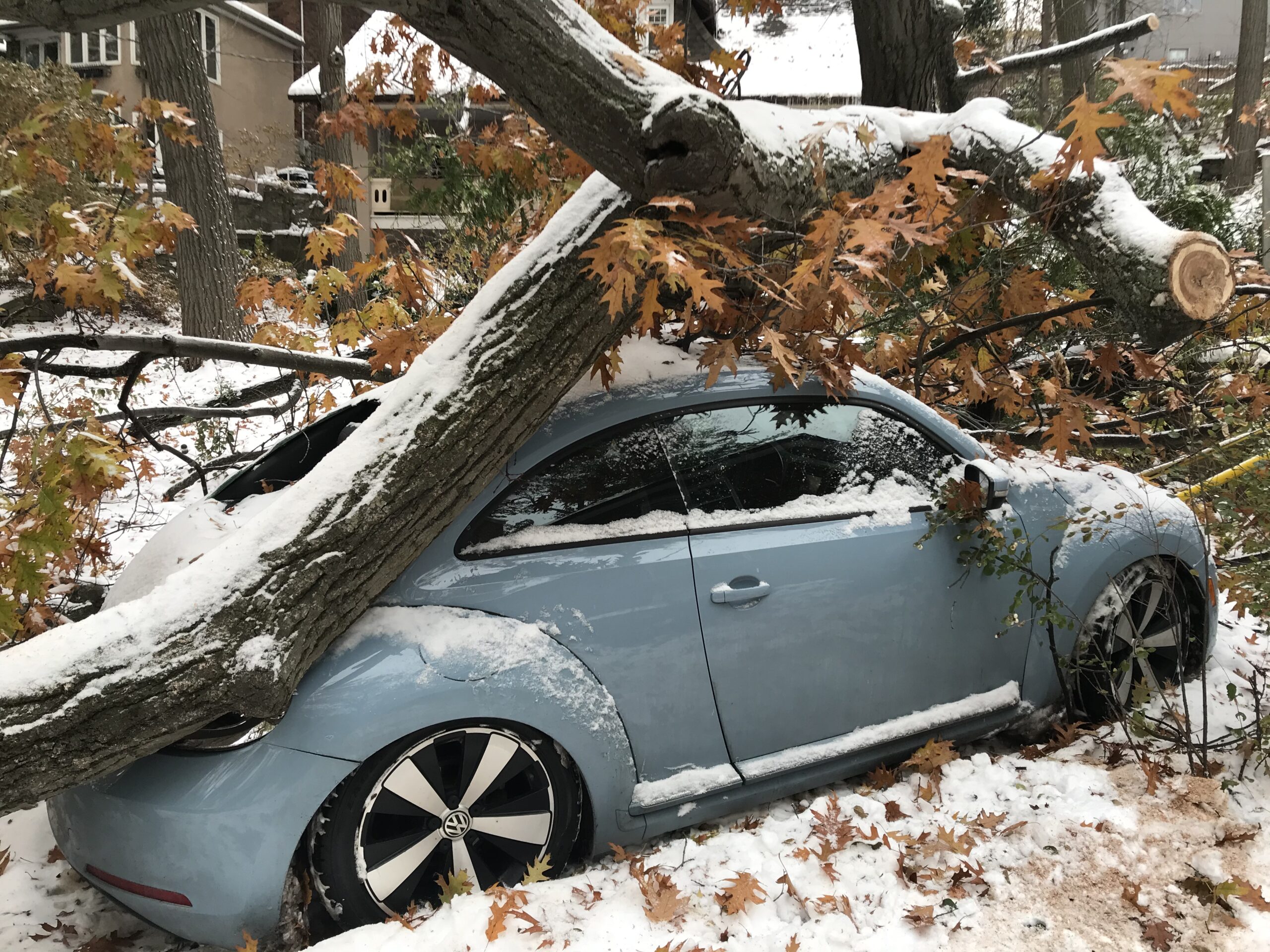Address:
1725 Dundas St E, Mississauga, ON L4X 1L5, Canada
Table of Contents
In Mississauga, trees form a crucial part of our urban landscape, providing not just beauty but essential environmental benefits. With over 57 years of arborist experience, we understand the nuances of tree care that are specific to the diverse Canadian seasons. This guide is designed to help homeowners recognize potential tree hazards and effectively manage them through proactive measures. Our approach combines traditional techniques with modern arboriculture to ensure your trees enhance both property value and community safety.
Identifying Common Winter Tree Hazards

1. Frost Cracks
These are not just cosmetic issues but potential gateways for pathogens. They occur when the tree’s sap freezes and expands, causing the bark to split. Trees like maples, cherries, and apples are particularly susceptible. Preventing frost cracks involves measures like wrapping trunks with tree blankets in late fall and placing young trees in locations shielded from temperature fluctuations.
2. Branch Load from Snow and Ice
The accumulation of heavy snow and ice can break branches, endangering both the tree and its surroundings. Arborists recommend proactive structural pruning in the late fall, which reduces the burden on tree branches and minimizes risk. For homeowners, safely removing snow from branches after each snowfall, using brooms to gently lift snow off without damaging the bark, can be beneficial.
3. Winter Desiccation
Particularly for evergreen species, winter desiccation can cause significant damage as these trees continue to lose water through their needles. Techniques to mitigate this include watering trees thoroughly before the ground freezes, applying anti-desiccant sprays to the foliage to reduce water loss, and using burlap screens to protect trees from harsh winds.
Tree Hazards Related to Spring Planning
1. Planning for Construction and Renovations
Spring projects like pool installations and new decks can critically impact the surrounding flora. Effective planning involves identifying the critical root zone of each tree (the area where tree roots are most concentrated and active) and designing your project to avoid these zones. We can provide root mapping services, which are a crucial part of our comprehensive root pruning and remediation offerings. By using advanced techniques such as air spading, we ensure that both your trees and your projects thrive, while carefully managing the health and integrity of the root systems.
2. Canopy Management for New Landscape Features
Managing the canopy involves not just pruning but understanding the light requirements of both your trees and any new plants. Strategic canopy thinning can improve light penetration and air circulation, which is crucial for the health of underplantings. This should be timed to coincide with the tree’s dormant phase to minimize stress.
3. Pest and Disease Management
With the arrival of spring, monitoring for pest infestations and fungal diseases becomes critical. Early spring inspections can identify issues like aphid infestations or fungal spots before they escalate. Integrated pest management (IPM) strategies, which may include biological controls and targeted pesticide use, can effectively manage these problems without harming the ecosystem.
Preparing for the Upcoming Seasons
1. Seasonal Pruning
Understanding the best times to prune specific tree species can significantly affect their health and growth. Deciduous trees are best pruned in late winter, while flowering trees should be pruned after they bloom. Each cut should be made with precision to avoid exposing the tree to diseases.
2. Soil Care and Mulching
Healthy soil is the foundation of healthy tree growth. Spring is the ideal time to test soil pH and adjust it with amendments like lime or sulfur as needed. Applying a fresh layer of organic mulch not only conserves moisture and regulates soil temperature but also adds nutrients as it decomposes.
3. Regular Health Assessments
Quarterly health assessments by a certified arborist can catch issues like structural weaknesses or root diseases early. These visits can include detailed reports on the health of your trees and specific recommendations for care or treatment.
Conclusion
In our decades of service across Mississauga, Toronto, Scarborough, Etobicoke, North York, and East York, we’ve witnessed firsthand the consequences of neglected tree hazards. From substantial property damage to severe safety risks, these instances underscore the importance of vigilant tree care. Recognizing signs of distress in your trees early on can prevent these issues from escalating into costly and dangerous situations.
At Rooted Tree Services, we are dedicated to fostering healthy urban environments through expert tree care. Our team of certified arborists is equipped with the skills and experience needed to address the unique challenges faced by trees in our diverse communities. If you have concerns about tree hazards or wish to improve the health of your trees, we invite you to reach out. Let us help you maintain the beauty and safety of your landscape, enhancing the quality of life in our shared spaces.

